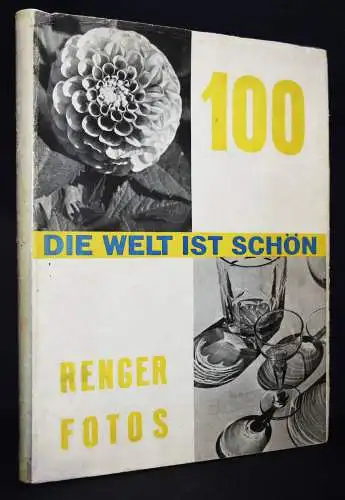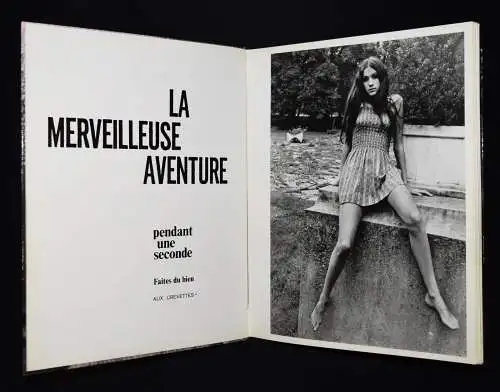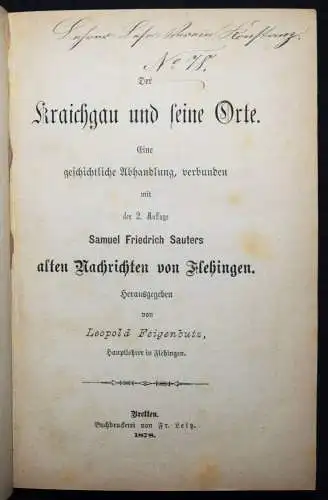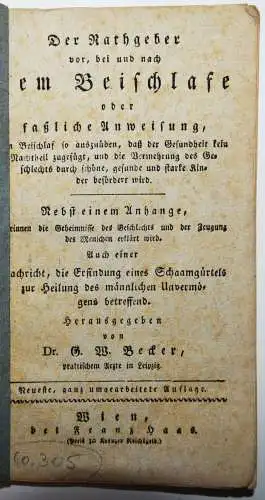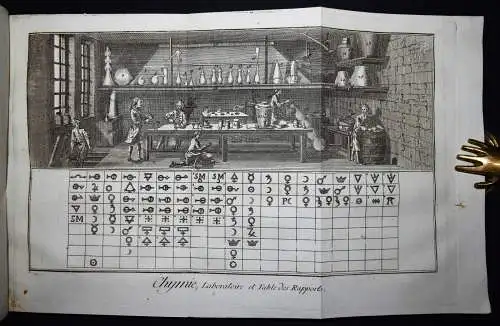Renger-Patzsch, Albert. Die Welt ist schön. Einhundert photographische Aufnahmen. Herausgegeben und eingeleitet von Carl Georg Heise. München, Kurt Wolff (1928). 4°. 21, (1) S., [1] Bl. u. 100 Tafeln. OLn. mit silbergepr. Rückentitel u. Deckelvignette (von Alfred Mahlau, Lübeck) mit illustr. Orig.-Schutzumschlag (von Friedrich Vordemberge-Gildewart, Hannover).
Auer 134. Göbel 689. Heidtmann 10691.
Heiting/Jaeger II, 284 ff. (mit zahlr. Abb.). Koetzle 322. Parr/Badger
I, 125. Roth, The Book of 101 Books 50 f. Roth, The Open Book 68 f. –
Erste Ausgabe. – Mit eigenhändiger Widmung von A. Renger-Patzsch „Herrn Direktor Hans Wolflein mit ergebenstem Gruss Alb. Renger-Patzsch“.
– Standardwerk der „Neuen Sachlichkeit“ in der Fotografie. Die
Detailaufnahmen von Natur, Objekten und Architektur zeigen den „neuen
Blick“ des Fotografen für natürliches und technisches Gleichmaß und
Harmonie von Formen und Reihen. – „Eingangs ordnet Heise die sachliche,
doch zugleich schöpferische Fotografie von Renger-Patzsch in „eine
Revolution des ästhetischen Empfindens“ und „die Entstehung eines
veränderten Schönheitsbegriffs“ der Gegenwart ein“ (R. Jaeger in
Heiting/Jaeger). – „The title he (Renger-Patzsch) preferred was ‚Die
Dinge‘ (things), which was more in keeping with his idea of a stricttly
„photographic photography“: pictures that where above all straight
forward, easily apprehended documents, free of the distracting artistic
interventions of his avant-garde contemporaries. „In photography,“ he
wrote, „oneshould surely proceed from the essence of the object and
attempt to represent it with photographic means alone, regardless of
wether it is a human being, landscape, architecture or something else.“
The word Renger-Patzsch used to describe „the position of servitude I
maintain before the oject“ was a foreign one – ojectivity – but the New
Objectivity (Neue Sachlichkeit) style he sparked was one of Germany’s
most pervasive modernist movements (successfully revisted at the end of
the century by Bernd and Hilla Becher, Andreas Gursky, Thomas Ruff, and
Thomas Struth). The photographs in ‚Die Welt ist schön‘ have a cool
reserve and a deliberate ordinariness that still look „modern“, and
their elevation of the common object to iconic status feels proto-Pop.
But they were always more reactionary than revolutionary, and today the
project appears rather bloodness and conservative“ (V. Aletti in Roth). –
Randläsuren und Fehlstellen am Schutzumschlag restauriert,
Schutzumschlag am Rücken aufgehellt, etwas angestaubt und leicht
braunfleckig, das Widmungsblatt und der Vortitel etwas braunfleckig,
sonst sauber und sehr gut erhalten.
Gute Ware
alles bestens!
